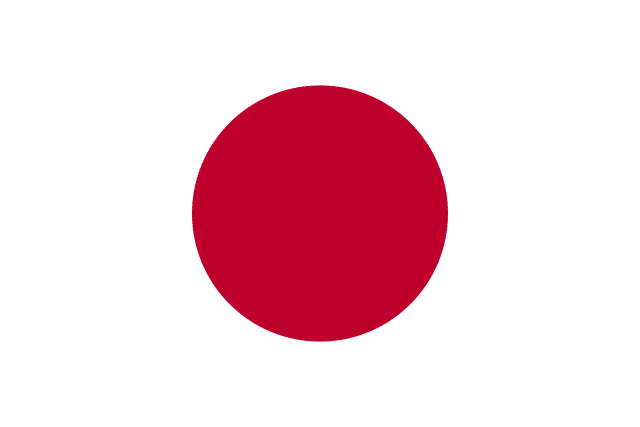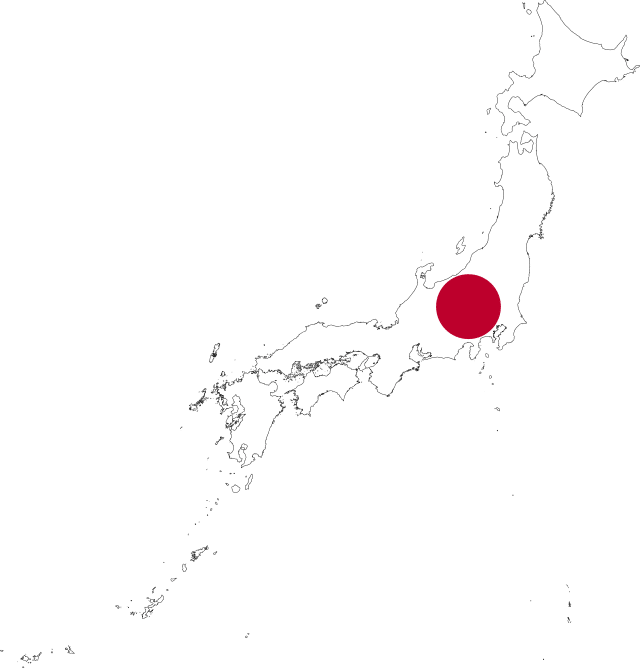Contents
Once you enter a realm where symbolism and cultural history blend effortlessly, the distinctive flag of Japan will capture you immediately. “Nisshōki”, more often known as the “Rising Sun Flag,” is a straightforward yet strong symbol with a long and rich history. Behind its striking red circle is a story of tradition, tenacity, and persistent national identity.
Come along on a journey of discovery as we explore the meaning, history, and ongoing relevance of this iconic emblem in Japan’s rich culture.

Overview of Japan: Country Profile
Japan’s flag is a representation of the country’s culture and people. That is why it is essential to start our article with a little overview of Japan’s country profile.
Japan is a fascinating island in East Asia, home to a lively culture, a diversified topography, and a long history. From the imposing snow-capped heights of Mount Fuji to the busy metropolis streets of Tokyo, Japan provides a mesmerizing fusion of urban refinement and natural beauty. Let’s explore Japan’s intriguing landscape, population, and age-old customs and culture, which are what genuinely distinguish this country from others.
Geographically speaking, Japan is made up of several smaller islands in addition to the four main islands of Honshu, Hokkaido, Kyushu, and Shikoku. It has a rough and diverse topography as a result of being situated near the Pacific Ring of Fire. The majority of the nation is covered with mountains, including the 3,776-meter-tall Mount Fuji, which is regarded as the national emblem of Japan.
Japan has beautiful coastal regions and productive plains in addition to its mountains. The Pacific Ocean position of the nation fosters a thriving fishing sector, and the coastal regions are well-known for their beautiful beaches and quaint seaside communities. Large-scale agricultural operations are supported by rich plains in the interior, particularly in the Kanto and Kansai areas, where rice production is the primary crop.
Japan observes UTC+9 Japan Standard Time (JST). The universal time in Japan is 9 hours behind it.
This amazing country has a population of nearly 126 million people. Therefore, it is definitely one of the world’s most densely populated nations. But Japan is struggling with demographic issues like an aging population and a falling birth rate. A number of efforts have been put into place by the Japanese government to address these problems and encourage sustainable development.

Highlights of Japanese Culture
The deep reverence for nature and the cycle of the seasons that permeates Japanese culture is one of its most attractive features. Cherry blossoms, also known as “Sakura,” have enormous symbolic meanings, representing both the temporary aspect of life and the beauty of fleeting moments. For the Japanese people, the entrance of spring and the blooming of the cherry blossoms are times for joy and introspection.
Numerous festivals and events that honor the country’s rich cultural history are held throughout the year in Japan. Each matsuri, or traditional festival, has its own distinct customs and rituals, and they are held all throughout the year. These festivals demonstrate the profound commitment of the Japanese people to their culture, whether it is the explosive intensity of the Gion Matsuri in Kyoto or the captivating splendor of the Nebuta Festival in Aomori.
Design & Symbolism of the Japan Flag
The rectangular white field of the Japan flag is topped with a red-and-purple disc that is positioned toward the hoist side. The red disc signifies the rising sun, denoting a fresh beginning and vigor, while the white hue stands for purity, honesty, and integrity.
It’s important to note that the flag’s design reflects the country’s history and mythology. In particular, the myth of Amaterasu, the Shinto goddess of the sun and ancestor of the Japanese imperial line, is what gave rise to the crimson-red disc.
The crimson-red hue reflects the unflappable attitude of the Japanese people by conjuring feelings of passion, vigor, and power.
Similar to most countries, the size and proportions of the Japanese flag are regulated by legislation. Three-fifths of the height of the flag is taken up by the red disc, which is placed on the hoist side. These exact requirements guarantee that the flag will display consistently in all situations and sizes.
The Japan flag has profound value for its people and is filled with important symbolism. The flag has stood for the nation’s unification throughout history, encouraging a sense of cohesion and belonging among its people.
It frequently appears at international athletic events, official gatherings, and cultural celebrations, proudly representing Japan on the world stage. The minimalist aesthetics of Japan, which emphasize elegance, harmony, and subtle beauty, are evident in the design’s simplicity. The flag’s simple and uncomplicated design makes it easily recognized, making an impact that lasts.
History of the Japan Flag
The history of the Japanese flag dates back thousands of years. The use of a flag with a red disc may have been seen as early as the 7th century, under the rule of Emperor Monmu. However, its precise origins are still unknown. But it wasn’t until the 12th century that the flag gained wider popularity as a representation of Japan.
During the Meiji era (1868–1912), the flag’s current design with a white field and a crimson disc took shape. On August 5, 1854, with the arrival of Commodore Matthew Perry and the opening of Japan to the outside world, it was formally approved as the nation’s flag. The new look was intended to symbolize Japan’s modernity and fusion with the rest of the world.
The size and dimensions of the Japan flag have experienced slight changes over time. The flag’s proportions were first upheld in legislation in 1870, and its size and shape were standardized. The ratio of the flag was established at 2:3, guaranteeing uniformity and consistency across all applications.
Significant Events That Affected the Japan Flag
Several historical occurrences had a significant impact on the meaning of the design of the Japan flag. The flag acquired a more martial connotation during World War II as a result of its association with Japanese objectives of imperialism and expansionism. The flag was reinstated as a sign of peace and democracy during the post-war reconstruction phase, though, after Japan’s capitulation in 1945.
The flag has periodically sparked debate and controversy in recent decades, especially in light of its connection to Japan’s militaristic past. While some detractors contend that the flag has to be changed to remove itself from that period, others uphold its historical and cultural significance.
The Japan flag continues to be of utmost significance to the Japanese people, notwithstanding the controversy. It stands for harmony, pride in the country, and the perseverance of the people. It is widely exhibited during public ceremonies, sporting events, and national festivals, inspiring the Japanese populace to feel patriotic and united.
Japan Flag Protocol
In Japanese culture, the flag of Japan is highly revered and significant. As a result, there are rules and manners for how to use and show it. When dealing with the flag, it is crucial to comprehend and adhere to these rules.
It is critical to handle the Japan flag with respect and dignity when flying it. The flag should be swiftly raised and carefully and precisely lowered. It must never be shown in a torn or damaged state, nor should it ever touch the ground.
Typically, the flag is flown alone in the place of honor. The Japan flag should be positioned higher and in the center if other flags are being shown, out of respect for them. The flag is often placed on the right side of the room, facing the viewer, when exhibited inside.
It is traditional for the Japan flag to be conspicuously flown at official occasions like holidays and public gatherings. The national anthem is played before public meetings, and citizens are encouraged to express their appreciation by standing at attention and facing the flag.
Any replica or portrayal of the flag should also be respectfully accurate and adhere to the flag’s official size, design, and color scheme.
Interesting Facts About Japan Flag
- The use of a flag with a red disc dates back to the 7th century, making it one of the oldest flags in existence.
- The red disc on the flag depicts the rising sun, which stands for a fresh start, optimism, and vigor. Its origins can be found in the myth of Amaterasu, the Shinto goddess of the sun.
- The Japan flag does not have an obverse (front) or reverse (rear), unlike many other national flags. It may be viewed from any angle and is symmetrical.
- To commemorate and respect the country’s history and culture, the flag is widely flown at festivals such as National Foundation Day (February 11).
- The Japan flag has caused some controversy throughout the years, mostly because of its connection to Japan’s military past.
Conclusion
All in all, Japan’s flag has illuminated its lasting cultural relevance and deep-rooted significance. The flag is a potent reminder of Japan’s long history and unyielding spirit, from its ancient beginnings as a representation of the sun goddess Amaterasu to its contemporary manifestation of national pride.
The flag represents the Japanese people’s togetherness, fortitude, and unbeatable spirit, in addition to its vivid colors and design.